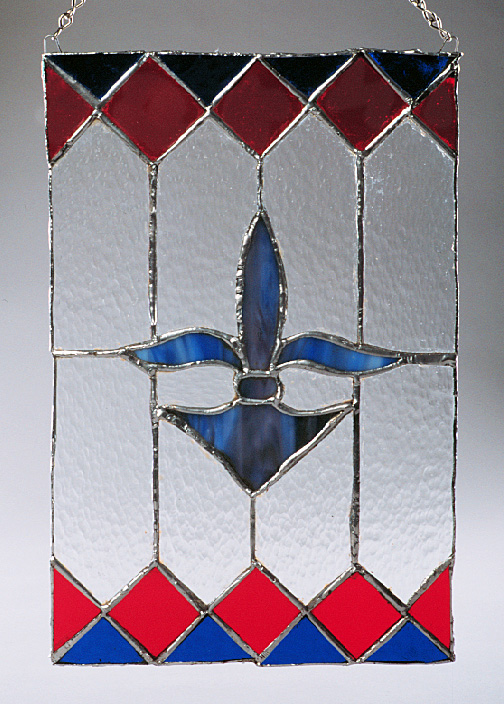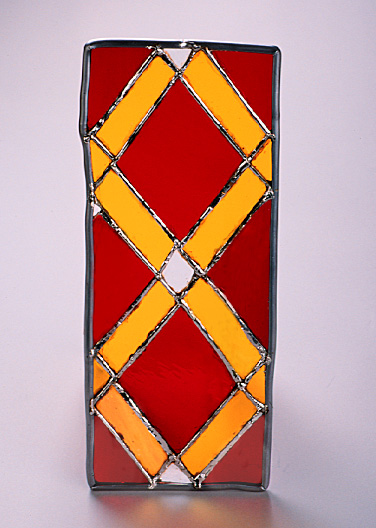Stained Glass, Europe, Medieval
by Jamie Humphrey '98 and Linda Phelps 'AC

Glass making originated in the Near East around 2000 BCE in the form of beads, seals and inlays.
The earliest makers pressed glass into molds. Around 1500 BCE, finer vessels were being made in Egypt.
The best glass manufacturers and exporters of this time were the Phoenicians who had a great supply of
silica rich sands. Glass blowing developed around 1st century BCE in Palestine.
Although the art of stained glass did not reach its height until Europe's Gothic Era, we find
written descriptions of it dating as far back as 5th century AD. The earliest dated pieces in existence
are from the 9th century (Lorsch Abbey, Darmstadt). The technology of creating stained glass has been
changed by improved tools and increased scientific knowledge, but the technique is essentially the same
as in medieval times. A full size drawing of the design, called a cartoon, is used as a template for
cutting the glass. After being cut, the pieces can be temporarily held together by beeswax or Plasticine,
then painted. The paint is then fused to the surface of the glass by firing in a kiln. After the final
firing is the glazing process. The pieces of glass are joined by strips of lead which are soldered together.

The production of stained glass has evolved over time. In the Middle Ages, it was created by
monastic workshops and later guilds. When the art of stained glass began to decline in the 17th
and 18th centuries, production was usually by individuals or families. Workshops were brought
back into use in the 19th century, when large studios were created. Today, studios and individual
craftsmen coexist. The specialization of labor that exists in the creation of stained glass has
given it the classification of "craft" rather than "fine" art. The art of stained glass is the
only medium that is observed through refracted light, rather than the reflected light by which
we view paintings, sculpture and photographs. This quality of stained glass surely contributes
to the medieval belief that it symbolized "divine light".


